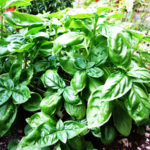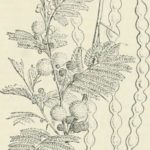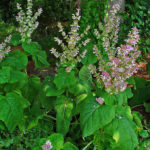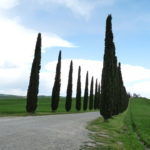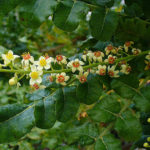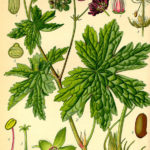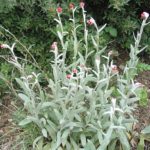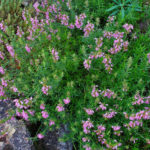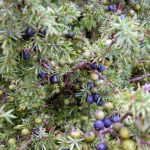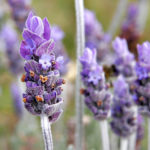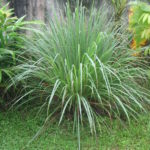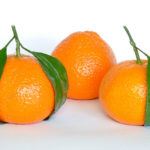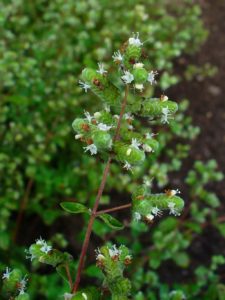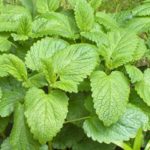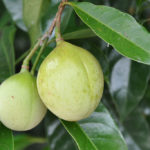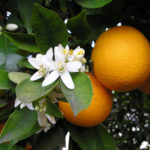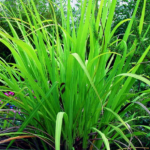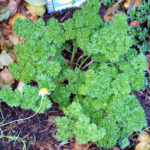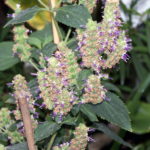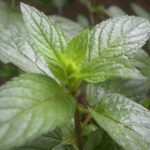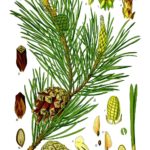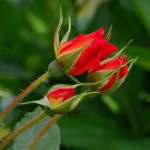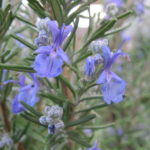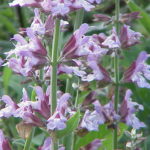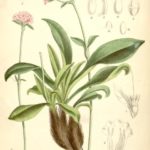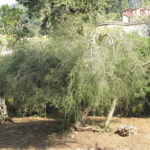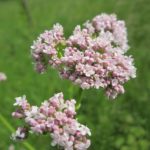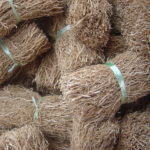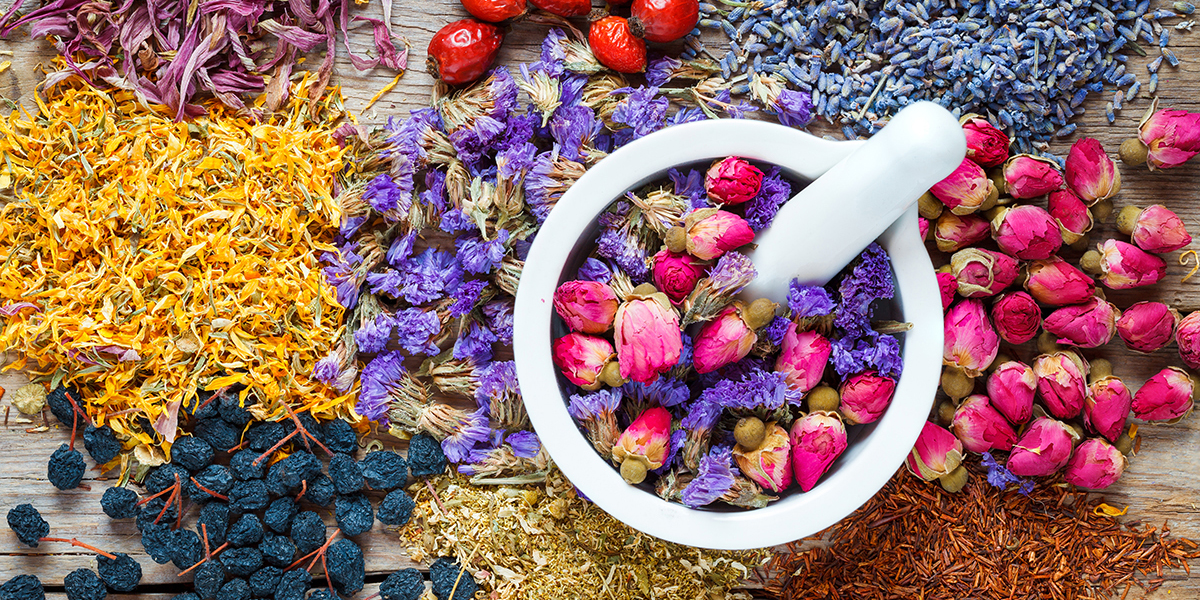
Aromatherapy
Aromatherapy has had an extensive and varied history, and because the oils have been around for so long, I could only denote what I thought were some highlights in its instrinsic past. Apart from just the physical attributes of the essential oils, there is also an energetic that each oils carries that can also effect our beings.This is touched upon in some of the articles below. I have also put forward some esoteric musings about the macrocosm/microcosm world of aromatherapy— such good fun to explore!
The “Oils for Common Complaints” article lists various disease states and offers suggestions as to which oils might assist in its healing.
Peruse and amuse yourself.
“All our knowledge begins with
the senses, proceeds then to the understanding, and ends
with reason.”― Immanuel Kant,
Critique of Pure Reason
History of Aromatherapy
Plants and trees have been used medicinally pre-dating written history. Early man, as a hunter-gatherer, must have sampled different plants to find out if they were edible and if so, what effects the plants had on the body. He would have learned quickly that some herbs bring on stupor, some enliven, others purge and of course, many nourish the body. A deep understanding and connection would have been formed between man and plant. As anyone who has lived close to the land soon learns, plants have a spirit of their own and can commune their intent if one is open enough to listen to their energetic frequency. In early times, man probably had a much keener awareness of his environment and worked more closely with the rhythms and vibrations of the earth. His sense of smell would be more honed, the odor entering the brain allowing him to intuit the efficacy of the plant by tuning into its vibration and sensing whether it would a healthy fit for his body. Modern man has lost a lot of innate connection to the spirits of the earth.
Still in pre-written history, we have oral accounts, (ancient traditions) telling of rituals and ceremonies using plants. “Smoking” was a basic form of an energetic cleansing ritual in which herbs were gathered and usually dried, then set afire so that the smoldering smoke would envelop the person or object being cleansed, clearing them of all negative (evil) energies (spirits). In our modern day we still use sage for ‘smudging’, as in earlier times, to clear unwanted negative energies from a room or person. The ancients might well have seen how burning certain plants would bring on different and desired effects. Some smoke would sedate and lull, some invite visionary experiences, while others would invigorate and energize, even causing anger or aggression. Burning herbs and plants in confined shelters with groups of people would have a community effect where the entire crowd would experience a similar sensation, creating the space for mass consciousness (or mass hysteria). Given the right mixture of herbs, a shaman or warlord could arouse the populous to do his will, for good or even evil purposes. Those in ancient power understood the power of the plants and plant spirits.
The early Egyptian were well adept in their use of essential oils. Priests were probably the first aromatherapists in that they understood the efficacy of essential oils for medicinal and spiritual purposes. They left papyrus accounts of recipes delineating which essential oils were used in specific rituals. Priests assigned particular fragrances for each god and goddess and would entreat a favor from the god/goddess by anointing their statue with a specific formula of oils. These favors might range from prayers for health and healing, pleadings for favorable love matches, and beseeches in times of war and peace. Frankincense and myrrh were among the favorite incenses used in the temples, as well as in personal use. Numerous other essences used included spikenard, origanum, elemi, rosemary, hyssop, clove, nutmeg, almond, henna, juniper, coriander, galbanum, cypress, cinnamon, peppermint, cassia, citronella, acacia and cedarwood. Unguents were made from these resins and spices and were equally used for perfumes as they were for medicines. There was no clear distinction between the medicinal and cosmetic traits of these oils in ancient times. Both were considered of parallel value. There is a story that the Egyptian men would wear a cone of solid fat impregnated with essential oil on their heads, and as they walked around in the sun, the fat would melt and the oils would cover their bodies. This was done as much to protect them from the sun as a form of beautifying the body. Female dancers would also form fat/wax cones on their heads, scented with the more aphrodisiac oils and dance until their body heat dripped the oils down their scantily draped bodies, entertaining their audience with sensual enticements. In other applications, oils such as cedarwood were smeared on papyri and used to protect them from insects. And there was even found a formula for deodorant.
Essential oils also had a practical and medicinal value to the Egyptians. Because of their antiseptic, anti-fungal and anti-inflammatory properties, many essential oils were used in embalming practices. Mummification was widely practiced using spices and resins such as frankincense, cedarwood, myrrh, calamus, cassia and spikenard to purify and preserve the body. Oils were also buried with the body so the spirits in the afterlife could enjoy their perfumes and medicines. Onyx, glass, ivory and alabaster bottles were found in tombs that contained the remnants of essential oils that still had their scent as well as their healing qualities. Successive nations utilized the Egyptian understanding of essential oils and developed them more to their immediate needs.
By 1800 BC., there is a flourishing trade between Egypt and Babylon. Spices and oils are being exchanged, with cedarwood, cinnamon, myrrh and cypress amongst the prize ingredients for cosmetic and medicinal purposes. These oils, as well as many others, were used as unguents and applied to the body and hair. Moving on to around 1500 BC, Akhenaton, a pharaoh of singular insight, ordered towns to be built with large squares left open for burning herbs with the idea of keeping the air purified and antiseptic. The belief that herbs, oils and unguents had beneficial medicinal properties as well as pleasure aromas was well established at this time. In 1240 BC we have the mass exodus of Moses and his people. Moses was given, in his commandments by the Lord, recipes for making holy oil and incense (Exodus 30, 22-25), to be used only in ritual or for holy functions. At this time also, Hebrew women, skilled in the use of oils for purification, favored myrrh for ceremonial anointing.
By 500 BC the Nile Valley was considered the ‘Cradle of Medicine’ because of their expert use of oils and herbs for healing. The Greeks learned all they knew from the Egyptians, but began attributing the efficacy of their herbal medicines to the wisdom of the gods. Greek mythology accredited perfumes and unguents as gifts from the gods, believing that the gods themselves manufactured these salubrious scents for the mere mortals below. Around this time a medical school was established on the Island of Cos, combining knowledge and experience from both Egyptians and Greeks and cataloguing the different recipes or herbal combinations for their medicinal use. Hippocates, considered the ‘father of medicine’ graduated from this school, and honing his knowledge and skills, became a world famous healer. He believed that having daily baths in perfumed water and being massaged by oils would keep a body healthy and germ-free. Another Greek physician, Megallus, created his own brand of perfume, using cinnamon, cassia, myrrh, and frankincense, among others, in a fat based oil solution, that he claimed would not only smell sweet, but reduce inflammation and heal wounds. Herodotus and Democrats should also be mentioned as masters of perfumery at this time. Actually men were equally as skilled in anointing their bodies as the women. Different unguents were massaged on different body parts, i.e. arms might be anointed in mint, whereas hair would have marjoram, and knees and neck would have ground thyme (to quote Antiphanes). Diogenes, a genius in his own right, if a little misguided, believed that it was most efficacious to anoint the feet (reflexology?) with oils, although the bard Anacreon suggested that the breasts be most anointed, as that was the ‘seat of the heart, both emotional and physical’. Wine was sometimes used as a base for perfumed unguents and history tells us that Anacreon certainly liked his wine!
Dioscordes catalogued all the known herbs and their uses in his “De Materia Medica” , which later became a bible (of sorts) for the Greeks and Romans. The Greeks knew that extracted oils had sedating or revitalizing properties and there are recipes in which rose and hyacinth were considered uplifting, able to stimulate a fatigued mind. It was noted that most flowers with a spicy fruity scent were respond similarly. Lily, narcissus and the heavier, headier florals would have a sedating, even stupefying effect. The Greeks understood the aphrodiasiac qualities of herbs and food, using them for their enjoyment, although it is the Romans who perfected hedonistic use of aromatics.
The Romans took the use of essential oils to new extremes. In self-indulgent Rome, lavish baths were created as focal points for Roman life. Men would gather in the mid afternoon at these communal bathing facilities and not only soak in water, but compete in sports like wrestling, have business meetings, wander through gardens and enjoy entertainment. Before the sports, men would be oiled up usually with olive oil, then have their bodies scraped with a curved metal wire to take off excess dirt and sweat. Plunges into a variety of bathes from cool to hot were followed with massages rich in fragrant unguents. There were 3 main types of perfumes used at this time: “Ladysmata” were solid unguents, “Stymmata” were scented oils, and “Diapasmata” were powdered perfumes. Recipes for favorite aromatics used during this period were archived. One was called “Susinum” which was a combination of honey, calamus, cinnamon, myrrh, and saffron. “Nardinum” brought together calamus, costus, cardamom, melissa, spikenard and myrrh. These would be used in cosmetics, or in massage, rubbed on hair, or even scented bed clothes. One interesting note was that the scent of orange was reserved only for courtesans and ladies of a similar trade, which if you think of the aphrodisiac qualities of neroli, you can imagine why… As stated earlier, men enjoyed smelling as sweetly as women. Although women were allowed to use the bathes, they had to pay more and usually met only in the mornings, staying segregated from the men.
By 3AD, Rome was the bathing capital of Europe, with 1,000 fragrant spas in the city alone. Nero, the then debauched, self-serving emperor, lavished himself in scented bliss, particularly taking pleasure in the scent of roses, believing that the oil not only uplifted spirits, but also helped with headaches and indigestion. One would drink out of perfumed cups and walk through spice-scented rooms when visiting Nero’s palace. Unguents were being so widely used by that point in history, that in 30AD supplies of exotic plants and herbs were becoming scarce. An edict was drafted encouraging less personal use of aromatics so that the supplies could be used more for medicinal, religious and ritual purposes. And so aromatherapy continues to spread and expand through out developing nations.
We are now around the time of Christ, where there are many references to the use of aromatic oils. We, of course, have heard tell of the wise men carrying the most precious of commodities, being gold, frankincense and myrrh to the baby Jesus. The healing qualities of frankincense and myrrh were widely known from the Egyptian’s texts of uses, as well as the knowledge the Greeks had handed down. These oils were as sought after as gold and considered as equally valuable, definitely fit for a king. Apart from its physiological healing properties, one of frankincense’s constituents is a psychoactive chemical, which is known to expand consciousness. This could be one of the reasons it has been used in meditation, ritual and ceremony through out history and given to the Christ-child. In the olden days, people believed that burning the “tears” of frankincense would keep away evil spirits (obsessions, fears, anxieties). Incense of myrrh balances the emotions and cools the atmosphere of tension, anxiety and high-strung emotions. Stimulating the 6th and 7th charkas, this resin resonates with the color blue/indigo, encouraging us to speak our truth from our higher selves. Again, a wonderful gift for the baby Jesus, considering his connection to God. Later there are references to Mary anointing Jesus’ feet with Spikenard, another cherished and expensive oil of therapeutic capacity. Spikenard, because of its great cost, was usually given in a beautiful ornate box, which legend has, could only be opened by the recipient. It carries a high vibration, enabling a deep connection to one’s spiritual self and one’s inner being. Its calming properties enable a deep state of meditation, almost trancelike in nature. Spikenard also is useful for its regenerative properties and is great for dry scaly skin, especially for tired and calloused feet. To anoint, back then, meant to rub on or massage – did Mary know a bit of reflexology maybe, for someone’s weary feet? There have been suggestions, in The Jesus Scroll, that the translation of the Garden of Gethsemane was indeed a mistranslation and that it really was the “garden of Jessamine” or the jasmine garden. Jesus spent his last night (and nighttime is when jasmine is its most fragrant), a night of internal conflict and questioning, in a garden surrounded by the sweet scent of this high vibrational flower. Research has shown that jasmine stimulates a neurotransmitter called encephalin in the brain, causing an opening of the emotional centers. We know jasmine relieves fear, tension and anxiety, and brings in trust, compassion, love and optimism. How perfect would that have been for Jesus, to be supported by such a euphoric, warming scent during such a dark and fearful night. And I loved the idea that I read when researching this article that the stone used to close Jesus’ tomb was actually the stone from the jasmine extractor trough. Apparently back then, to extract jasmine oil, they would sprinkle the jasmine flowers in a stone trough and pour olive oil over the flowers, then take a large round stone and grind the flowers down into the oil, causing the essential oil to express and bind with the olive oil. How symbolic for the burial stone to be impregnated with this supreme oil!
But the Middle East wasn’t the only place to find extensive use of herbs for their healing properties. All this time, China was perfecting its herbal traditions. The Chinese only had one word for what was produced from a plant’s fragrance. “Heang” could mean perfume, incense or unguent. The Chinese classified their “heang” into 6 mood inducing categories: tranquil, luxurious, refined, beautiful, reclusive and noble. Not only did these people scent their bodies, hair, clothes, homes and temples with sweet smelling oils, but they also added perfumes to things like paper and ink. (The original scented stationary!). The Classic of the Materia Medica was the first Chinese book to reference over 250 plant substances and their healing qualities, including proper preparation.
Meanwhile India was honing its own brand of healing. Ayurveda is one of the oldest known therapies linking the body and spirit. The four Vedic scripts put into writing all the knowledge needed for longevity and healing. These writings list pathways of disease and the use of herbs to assist and balance the body/mind. Many nations, including the Chinese, Greeks, Egyptians, Romans and the Persians traded information and knowledge with the Vedic Brahmanas. The Brahman was a sage/priest/physician all rolled into one. These visiting cultures took back a greater understanding of the holistic approach thanks to the Vedas.
Islamic medicine was influenced by with wealth of trade route information. But the most notable advances weren’t catalogued until the 11th century, during the Holy Roman Empire time, when a Arabic physician ‘Abu ‘Ali al-Husain Ibn ‘Abd Allah Ibn Sina, known as Avicenna in the west, created the first means of distilling essential oils. He created a system of coiled pipes, which allowed plant vapors and steam to cool down more effectively, enabling the concentration of essential oil to be extracted.
 So, herbal concoctions continued to be used all throughout the centuries. The Romans, in their conquests north and east, also brought their healing knowledge with them, teaching the ancient Brits, Celts and Nordics about herbal preparations. The Roman bath/spa idea also traveled north to Britain and we find a perfect example of Roman bathing tradition in the English town of Bath. Trade and warring conquests intermingled knowledge and understanding of the use of herbs and flowers in health and healing.
So, herbal concoctions continued to be used all throughout the centuries. The Romans, in their conquests north and east, also brought their healing knowledge with them, teaching the ancient Brits, Celts and Nordics about herbal preparations. The Roman bath/spa idea also traveled north to Britain and we find a perfect example of Roman bathing tradition in the English town of Bath. Trade and warring conquests intermingled knowledge and understanding of the use of herbs and flowers in health and healing.
After seeing the fall of the Roman Empire in the West, and with it, a lull in the great advancements in aromatherapy. There remained a trade of spices and resins between the East and the West for economic benefit, but the true wealth of healing knowledge as well as the opulence of the scent-filled rituals was put aside. Too much lasciviousness and wanton, dissolute behavior had left the common man sickened and disgusted with the extravagance of the Roman hierarchy’s abuse of aromatic oils. The proverbial pendulum swung the other way. Unguents, perfumes and herbs were still being used in every day life, but not with the lavishness that the earlier empires wallowed in. The Gnostic Christians in these next centuries are noteworthy, because they upheld the belief that using essential oils, considered the soul of the plant, would assist them in attaining a higher frequency of spirituality. They believed that the soul of the plant would inspire their souls to travel past the limitations of the material world and attain a heavenly status. A far cry from Nero’s hedonistic enjoyment (with no thought of saintly gain.)
 This plant/soul belief leads us into the Dark Ages in Europe where the main application of herbs for medicinal purposes was taken over by the monks in their monasteries. The monasteries’ “Infirmary Gardens” were formal, well-cultivated, raised herbal beds with walk ways in between them, allowing the monks to access the plants in an orderly and meditative fashion. Although many of the healing herbal formulas were carefully guarded secrets by the monks and nuns, much knowledge was carried between monasteries by traders and pilgrims. Thus ideas and recipes were exchanged. Of course many homes would have their own herb garden, and family recipes would be handed down from mother to daughter, but the monks discouraged family use, encouraging instead, reliance on the Church for their healing. One shining light that came out of that dark time was Saint Hildegard, the Abbess of Bingen, an herbalist in the12 C, who wrote 4 works on the “Causes and Cures of Illness” and the efficacy of herbs. Her favorite remedy was lavender, which is a cure-all in its own right.
This plant/soul belief leads us into the Dark Ages in Europe where the main application of herbs for medicinal purposes was taken over by the monks in their monasteries. The monasteries’ “Infirmary Gardens” were formal, well-cultivated, raised herbal beds with walk ways in between them, allowing the monks to access the plants in an orderly and meditative fashion. Although many of the healing herbal formulas were carefully guarded secrets by the monks and nuns, much knowledge was carried between monasteries by traders and pilgrims. Thus ideas and recipes were exchanged. Of course many homes would have their own herb garden, and family recipes would be handed down from mother to daughter, but the monks discouraged family use, encouraging instead, reliance on the Church for their healing. One shining light that came out of that dark time was Saint Hildegard, the Abbess of Bingen, an herbalist in the12 C, who wrote 4 works on the “Causes and Cures of Illness” and the efficacy of herbs. Her favorite remedy was lavender, which is a cure-all in its own right.
On another shore… aromatic oil use was still thriving in the Arab cultures. Mohammad (6th-7th C) loved fragrances, especially henna and rose. Rose water became a favorite in the Arab world, cleansing mosques, scenting clothes, adding sweetness to foods and even sprinkled as a welcoming gesture on guests. As mentioned last month, Avicenna (11 C) perfected the method of distillation of essential oils and in his writings, devoted an entire book to the uses of rose. By the 13th C, AL-Samarqandi was writing aromatic his recipes for baths, unguents and powders. In his one of his formulas, he suggested the use of marjoram, dill, thyme, chamomile, fennel, mint and hyssop for ear infections and sinus problems. Herbs would be sprinkled on hot rocks or simmered, releasing steam, which would carry the molecules of essential oil into the bloodstream through the lungs. (We still use essential oils in inhalations to fight infection). Incense was also burned and used as a carrier for the oils in the Arab world.
In the 12th C, in India, Somershvara wrote on the rituals of bathing with essential oils. The baths would contain the essences of agarwood, basil, cardamom, champac, clove, coriander, costus, jasmine, pandanus, pine, and saffron. Use of sandalwood, patchouli, amber and spikenard, musk and saffron were applied on different parts of the body in Tantric ceremonies – and we know from past articles that these oils are highly aphrodisiac, so would add to a heightened sensual experience.
With the dawning of the Renaissance in the 1300’s, came the full influence of the spice trade. Italy monopolized Eastern trade, which had been established during the Crusades. This war with Islam offered a great boost to the rediscovery and use of exotic plants and herbs in the West. Rose was prized as a commodity; and palmarosa, an essential oil that smells like a cross between rose and geranium, was often sold as pure rose by thieving traders. The Arabs made enormous profits on their trade, sometimes marking up as much as 300%. This prompted Marco Polo to journey to China to establish direct spice trade with the Chinese, bypassing the Moslem middleman. It also set Christopher Columbus off to find other sources of spices so Spain could continue in the trade war. His return with tobacco, vanilla, chilies and potatoes was very welcome, though he never did find his precious cinnamon and cloves. By 1498 Vasco de Gama found a way around Africa to trade directly with India. Such delights as cloves, ginger, pepper and benzoin made Portugal now the queen of the spice trade, causing Italy to persuade the Moslems to fight the Portuguese, with poor results. The Atlantic then took over from the Mediterranean as the preferred trade route and Europe never looked back.
One of my favorite books that I have used in researching this history series is Robert Tisserand’s “The Art Of Aromatherapy“. He has discovered, translated and written about some very unique and interesting tidbits from throughout history. One of his discoveries pertained to medieval times. Apparently herbalists and alchemists back then used to categorize the way the body responded to herbs and plants according to properties such as hot, cold, dry and moist. These divisions correlated to the Chinese Five Element philosophy, which stated that plants were hot and dry if they had a yang quality and they were moist and cool if they were yin. There were four degrees of hot, as there were 4 degrees of cold, again paralleling the Chinese yin and yang beliefs. These categories of herbs also related to the 4 elements – air, water, earth and fire – with air being hot and moist, fire being hot and dry, water being cold and moist and earth being cold and dry.
Another way of looking at the herbs from the middle ages was by characteristic or signature. They believed that something about the plant – its shape, color, strength, etc would resemble to the part of the body, the disease or the person it would cure. Common names thus began to reflect this theory, often describing the healing quality of the plant. The leaf of the Lungwort, for example, kind of looks like a lung and aids in lung complaints. Eyebright has a figure like an eye on its flower and helps with eye infections and redness. Self Heal has a throat-like shape and is a remedy for tonsillitis. The roots of the Lady’s Slipper resemble testicles and are a support for male complaints, while its shoe-like flowers have been used for edema, with the idea that when your foot is swollen, it can‘t fit into a dainty slipper. Kidneywort leaves vaguely resemble kidneys, violets have heart shaped leaves, etc. Even the ginseng, with its five pointed leaves, looks like a man with his limbs akimbo and is good for the whole body. Lacy leaves or umbel flowers like those of angelica, dill, or fennel have an aerating quality and are good for the lung’s air passages and bronchial conditions. The colors of the plants also reflected their efficacy. Red plants (cinnamon, coffee), for example, had stimulating effects where as blue (roman chamomile) were sedative in quality. Yellow plants brighten, like calendula, or St John’s Wort for depression. Actually, though, this method of color categorizing really isn’t all that valid in that many red flowers primarily calm and some blue can stimulate, but generally, back then, this was their belief.
I read somewhere that the location of the plant part would also lend a hint as to what it did. For instance, if the oil was extracted from the roots, it would have a more grounding characteristic, hollow stems would offer opening and clearing, solid stems encouraged stability and balance, oils from leaves led to flexibility and the ability to flow, flowers held a more heady and spiritual quality, and if oils were extracted from the whole plant, it would generally have an overall tonic effect on the entire body.
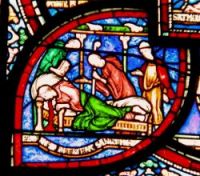 Plague ran rampant in the 14th century. Herbs were burnt both inside death houses and outside to purify the air. Lavender was notable for its antiseptic, anti-viral and anti-bacterial properties and was used to sanitize at that time, as was pine, frankincense, rosemary and hops. Actually, almost every aromatic herb was used during this time to combat the Black Death. There is a great story that the people of Young Living Essential Oils tell of 4 thieves who used a blend of cloves, rosemary and other essential oils in a face mask in order to be able to go into the homes of those stricken by the plague and steal from them. They knew that by inhaling these essential oils, the germs that caused the plague would be killed and they would remain free of infection. Many were not so lucky and devastation claimed countless lives.
Plague ran rampant in the 14th century. Herbs were burnt both inside death houses and outside to purify the air. Lavender was notable for its antiseptic, anti-viral and anti-bacterial properties and was used to sanitize at that time, as was pine, frankincense, rosemary and hops. Actually, almost every aromatic herb was used during this time to combat the Black Death. There is a great story that the people of Young Living Essential Oils tell of 4 thieves who used a blend of cloves, rosemary and other essential oils in a face mask in order to be able to go into the homes of those stricken by the plague and steal from them. They knew that by inhaling these essential oils, the germs that caused the plague would be killed and they would remain free of infection. Many were not so lucky and devastation claimed countless lives.
Herbal medicine was being comprehensively used in Europe by the 17th century. Nicholas Culpeper is noteworthy for his tomes on herbal pharmacology that a layperson could easily understand and put into practice. Culpeper was known as a neighborhood doctor, trying to educate the masses on herbal uses in healing. Unfortunately, others used Culpeper’s knowledge for their own gain and when only a little knowledge is taught, and some of it misinterpreted, charlatanism springs up on the scene. This was the case in the late17th century, so by the 18th c, many valuable recipes and herbal formulas were being bastardized and their efficacy was being lost.
Traveling back to Europe…Perfumed gloves were popular in France in the 17th c., and a guild of glove and perfume makers was established. Louis XV was particularly enamored of sweet scents and not only perfumed his skin, but his clothing, fans and furniture as well. No wonder his was known as “the perfumed court”. The original ‘eau de Cologne’ was developed at this time, containing rosemary, neroli, bergamot, and lemon, to name a few. (Earlier, knowledge of oils was also used for ill-intent. In the 1500’s, there is a story of Catherine de Medici who also liked aromatic gloves and enjoyed giving them as gifts. But alas, some of her fragrant gloves might well have been dipped in poison first before being scented and given away, as there are tales of woe about her enemies who received her not-so-sweet gloves…)
Crossing the ocean to America, we find that the Native Americans and South American indigenous people also had a long history of using herbs for healing purposes. Juniper, sage, cedar, echinacea, balsams and sweet grasses were popular with the tribes and “smudging”, which is still used today, was one way of cleansing the energetic body as well as purifying the body and soul. In 1716 a French explorer found American ginseng growing on Iroquois land, and soon it became a valuable export.
Jumping to the Victorian age, we find herbs used more for culinary purposes than for medicine. By now plants are being synthesized down to their ‘active ingredients’ and chemical cures are taking over holistic healings. Victorian people have become more interested in chemistry, looking at the individual components rather than the whole plant, and thus commenced the beginnings of medicine as we know it. In William Whitla’s Materia Medica (1882), some essences such as chamomile, juniper, lavender, peppermint, lemon and rosemary were scientifically studied for their efficacy. In the testing of herbs through the late 1800’s, some purported healing properties of these herbs were upheld, some dismissed as old wife’s tales, and most herbs were put on the kitchen shelf in favor of chemical drugs which acted more quickly and focused more precisely on the ailment. As perfumes, though, essential oils still maintained the mystic of influencing the body/mind connection with emotions.
I have a theory about the Victorian Age that I have never seen or read any where in history books (although I have mused about it in past Echo articles), so I can’t prove its validity, and yet it seems so logical… We know that in Victorian times, one of the fashion statements of the upper class was to have a paisley shawl from India draped on the piano or on the back of a chair in the drawing room or parlor, and apparently the most expensive and ornate shawls had a patchouli thread woven into the fabric. We also know that patchouli is an aphrodisiac, having narcotic properties that lull the senses, liberate inhibitions, heighten repressed sexual desire while encouraging sensuality. So, I’m thinking that even though Queen Victoria’s morality restricted overt sexual activity and disapproved of public displays of physical sentiment, that behind closed doors, in their drawing rooms, the upper class Victorians must have been influenced by the pervasive odor of the patchouli and under this influence they would have felt sexually stimulated and free of the social dictates. Certainly the limericks that come out of the Victorian era would attest to this covert, naughty, sexual behavior.
Anyway, getting back to scientific studies of plants… In the early 1900’s Rene-Maurice Gattefosse, a chemist in France, began looking at the antiseptic properties of essential oils. There is a story about him, working in his lab where he burned himself badly on the hand. He plunged it immediately in the nearest liquid, which was a vat of lavender, and because he had been studying the effects of this plant, he wasn’t at all surprised when his burn healed quickly, with no scarring. He used lavender in many experiments for skin repair and healing. Later, during the First World War, he used lavender, lemon, thyme and clove to help heal the wounds of the soldiers. He noticed how quickly wounds could be restored to health, eliminating infection and reducing scar tissue. His book ‘Aromatherapie’ was published in 1928 and in it he explored and promoted the use of the oils in their complete and unadulterated form. He believed that fragmentation of the oils in search of their ‘active ingredients’ for drug or chemical use diminished the strength of the whole plant composition. He also worked with the anti-microbial properties of essential oils, and his studies influenced many doctors after him, most notably Jean Valnet. Valnet also used essential oils in healing the soldier’s wounds, and continued his study and in 1964 published his own book ‘Aromatherapie’. A colleague at that time, Margaret Maury, a biochemist, didn’t feel comfortable using essential oils internally. Rather she began the method of applying essential oils externally, in massage, a technique then picked up by Micheline Arcier, who began colleges in London teaching the first courses in aromatherapy massage. Her groundwork in massage is the basis for most techniques used in present day.
Across the ocean, in America, the mainstay of medicine in rural communities was the home remedy to control small medical emergencies. Physicians often used plant and herbal preparations to treat minor illnesses. Then the pharmaceutical companies, with their influence over the medical community, began to undermine the trust that was put in home preparations.
Luckily, there is a trend to get back to basics and more ancient remedies, formulas and recipes are being rediscovered. Herbalists, natural health therapists and homeopaths are all going back to the origins to find ways of healing the body/mind with natural, whole substances. And schools and colleges are producing experienced massage therapists, skilled in the knowledge of the effects on the body of essential oils. People are beginning to trust the natural wisdom of the body, returning to the belief that the innate knowing of the body can instigate self-healing and the reversal of disease forms. History has shown us the gifts of the plant kingdom and our symbiotic relationship to it. Long may this relationship reign!
Aromatherapy / Essential Oils
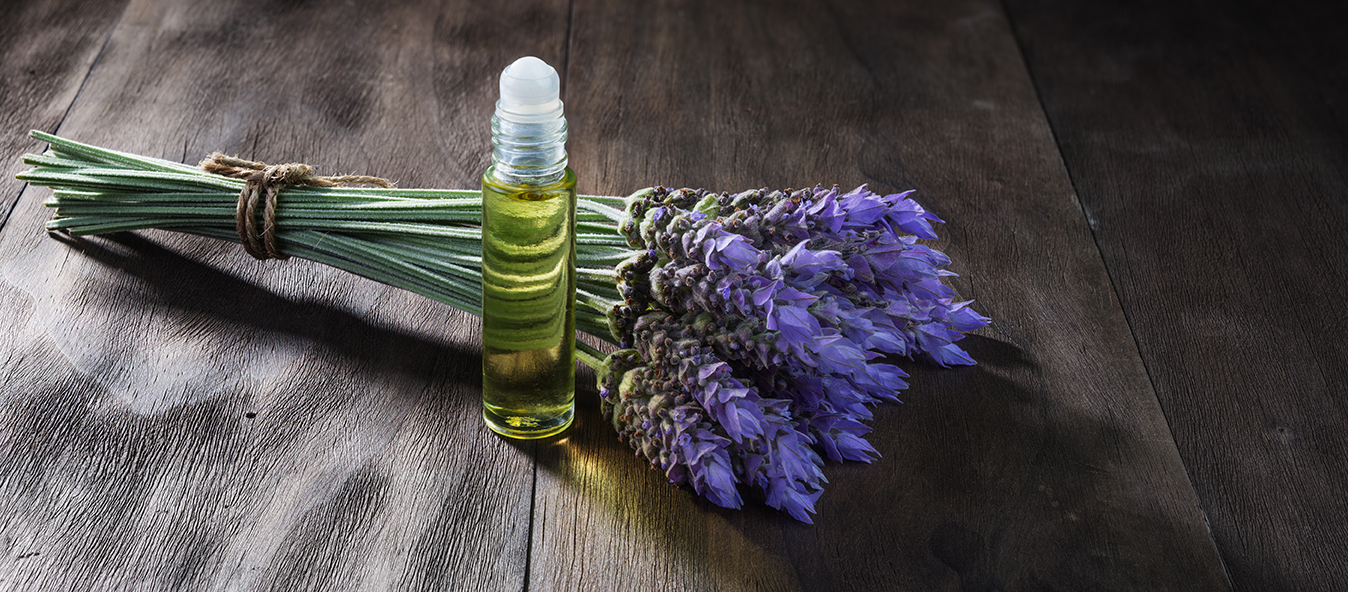
Essential Oils
Next Steps...
This is should be a prospective customer's number one call to action, e.g., requesting a quote or perusing your product catalog.

